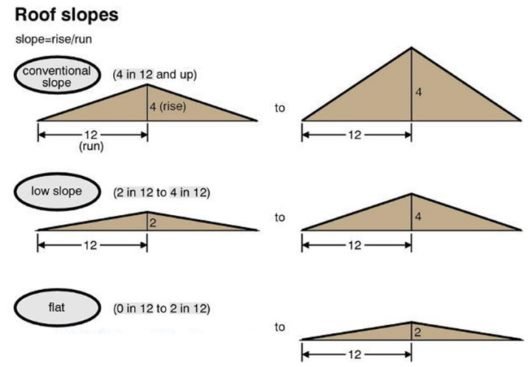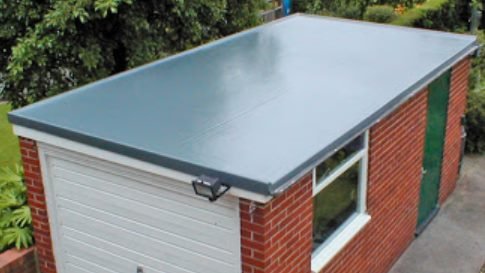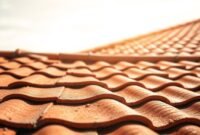Roof pitch, the angle or slope of a roof, significantly impacts a building’s aesthetic appeal and functionality. In this guide, I will share insights from over 15 years of experience in roofing, combined with research and real-life examples, to help you understand the most common roof pitches and their applications.
When you are about to build a house, a shed, or any building with a roof on the top, you need to understand what type of roof pitch and its angle to use on the roof.

The pitch of your roof can greatly impact the efficiency of your roofing system and should be considered when selecting the appropriate materials and installation method.
If you are unfamiliar with this, you can read it down below. It will give you a brief idea about the roof pitch and its usage. Here they are.
Understanding Roof Pitch
What is Roof Pitch?
Roof pitch is defined as the ratio of the roof’s vertical rise to its horizontal span. It is typically expressed in inches per foot. For example, a roof that rises 6 inches for every 12 inches of horizontal run has a pitch of 6/12.
Common Roof Pitches
The most common range between 4/12 and 9/12, balancing aesthetics, functionality, and ease of maintenance.
| Pitch Ratio | Description | Applications |
|---|---|---|
| 4/12 | Low slope, easier to walk on | Ranch-style homes, bungalows |
| 6/12 | Moderate slope, standard for many homes | Colonial, Georgian, and traditional homes |
| 8/12 | Steeper slope, offers more attic space | Victorian, Tudor, and other historical-style homes |
| 9/12 | High slope, excellent for snow runoff | Alpine, chalet-style homes, and areas with heavy snowfall |
Pros and Cons of Common Roof Pitches
“A 6/12 pitch is one of the most common, offering a balance that is visually appealing and functionally effective for a variety of home styles.”
Common Roof Pitch Angles Used By Builders
There are four popular roof slopes, known as standard roof pitches, often used by builders. These include flat, low-slope, medium-slope, and steep-slope pitches. They can be found in a lot of types of houses.
They are flat roof pitch, low-slope roof pitch, medium-slope roof pitch, and steep-slope roof pitch. Every single one of them is going to be explained here. You must read them before deciding which type to use on the house.
Read also: Flat Roof House
- Flat Roof Pitch

Flat roof pitch is also known as minimum roof pitch, as the steep part of the roof is very minimal. Even though the name of this roof pitch has ‘flat’ in it, the surface is not totally flat. There is still an angle to allow water to drain. The pitch is around 1:12. This is the type of roof you will find on a backyard shed.
- Low-Slope Roof Pitch

Low slopes are often built on houses or buildings where the roof is intended to be walked on for a long time. The pitch is around 2:12 to 4:12. When using this type of roof, pitch, water, or snow won’t run off easily, and this has to be frequently checked for leaks and cracks.
- Medium-Slope Roof Pitch
This is the most used roof pitch. The pitch is around 6:12 to 9:12. Snow and water run-off is easy on this one, and it can still be walked on pretty effortlessly. This is why most houses are using this pitch.
- Steep-Slope Roof Pitch

The steep pitch, typically above 9:12, is characterized by a significant roof rise over a 12-inch horizontal distance, making walking challenging. Water run-off won’t be a problem, but walking on the roof will be a hard thing to do here.
Read also: Types of Pitched Roof
Best Roof Pitch for Snow
When you live in an area where heavy snow often happens, your house must be completed by a roof that can endure the snow. This means the roof must be built at a certain pitch and angle.

That way, snow build-up won’t burden the roof and cause severe damage to the house. Here is further information about the roof pitch for snow.
- The Best Types of Roof Pitch for Snow
For asphalt shingles, the best measure of a roof pitch to endure snow is the medium-slope roof pitch, which balances snow run-off and walkability. This type of pitch can hold the snow build-up better, and the snow won’t slide down and fall easily, causing danger to the people or anything else under the roof. The snow run-off is great in this pitch type, and it is easy to walk on, too.
- The Material of the Roof Pitch for Snow
Besides the angles, you must also understand the best material for a house in a heavy-snow area to use in the roof pitch. Avoid the material of wood as wood can shrink and dry under freezing weather. Instead, use metal. Metal is sturdy, and it can endure cold, freezing weather better than wood.
Practical Experience and Examples
Personal Experience
In my career, I once worked on a project involving a 9/12 pitched roof in a mountainous region. This steep pitch was chosen to facilitate snow runoff and prevent ice dams.
Despite the challenging installation, the roof has performed excellently over the years, demonstrating the importance of selecting the right pitch for specific environmental conditions.
Case Study: 4/12 Pitch in Residential Homes
A recent project involved the construction of several ranch-style homes, all featuring a 4/12 roof pitch. This pitch provided a low profile, enhancing the homes’ aesthetic while making the roofs easier to walk on for maintenance purposes. Choosing a lower pitch also resulted in cost savings on materials and labor.
“In regions with mild climates, a 4/12 pitch is often preferred for its lower construction costs and ease of maintenance.”
Conclusion
Understanding the most common roof pitches and their applications is vital for both functionality and aesthetics. By considering factors such as climate, architectural style, and maintenance, you can choose a roof pitch that enhances your home’s performance and appearance.


